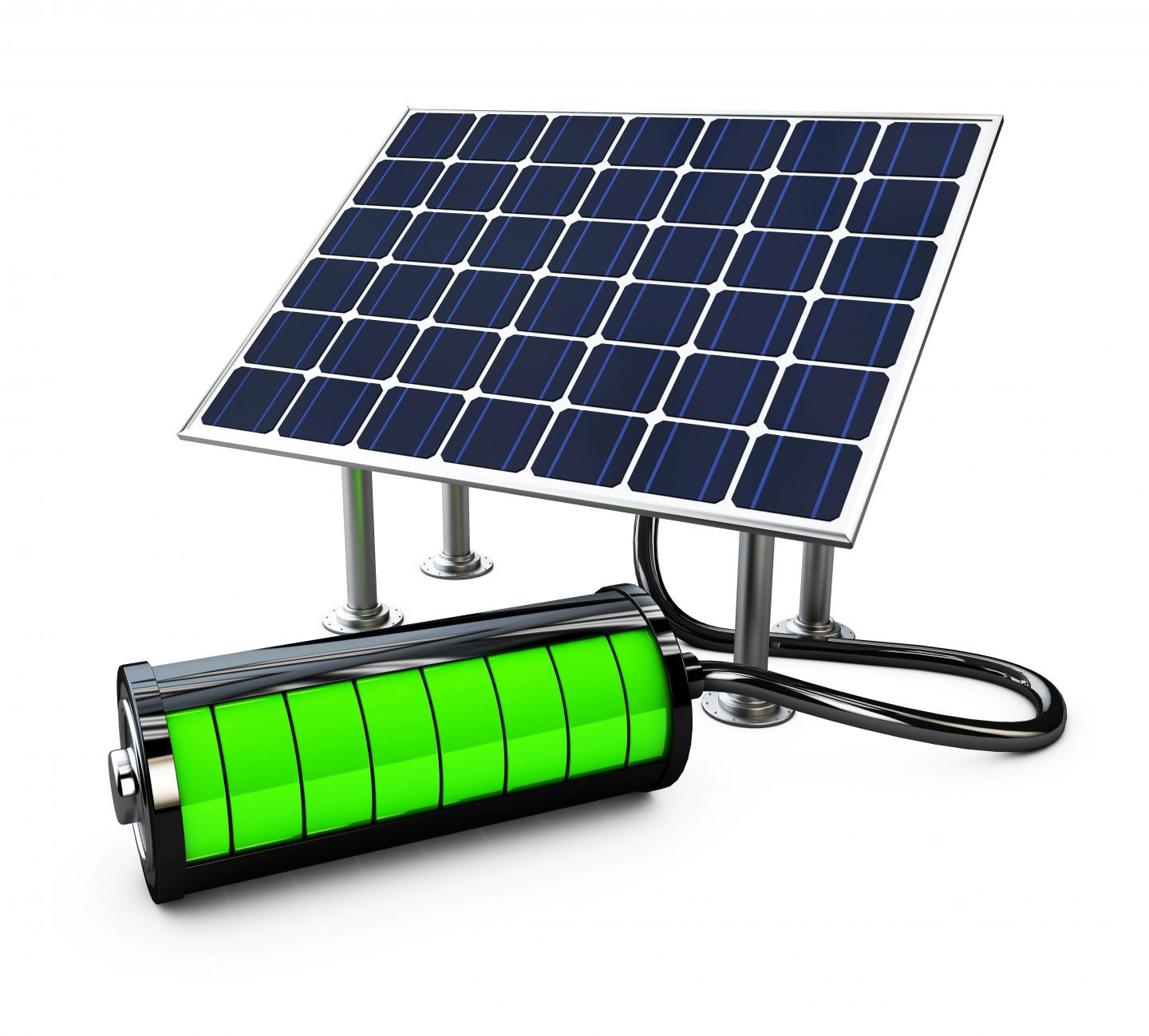

Articles
How To Store Solar Energy For Later Use
Modified: February 26, 2024
Learn how to effectively store solar energy for later use with our informative articles. Discover the latest techniques and technologies to maximize your renewable energy savings.
(Many of the links in this article redirect to a specific reviewed product. Your purchase of these products through affiliate links helps to generate commission for Storables.com, at no extra cost. Learn more)
Introduction
Solar energy has emerged as one of the most promising sources of renewable energy in recent years. With its abundance and sustainability, solar power has the potential to revolutionize the way we generate electricity and reduce our reliance on fossil fuels. However, one of the challenges of solar energy is its intermittent nature, as it can only be generated during daylight hours. To overcome this limitation and ensure a consistent power supply, storing solar energy for later use is crucial.
The storage of solar energy allows us to harness the sun’s power when it is available and utilize it during periods of high demand or when sunlight is not readily available. This ability to store solar energy has the potential to transform the energy landscape, making renewable energy sources more reliable and accessible than ever before.
There are several reasons why storing solar energy is of utmost importance:
- Energy Independence: By storing solar energy, individuals and businesses can reduce their dependence on the traditional electric grid. This offers greater control over energy consumption and can help mitigate the impact of power outages or shortages.
- Flexible Energy Usage: With stored solar energy, users can tap into their reserves during peak demand periods or during nighttime hours when solar panels are not generating electricity. This flexibility ensures a stable energy supply regardless of the time of day or fluctuations in energy availability.
- Reduced Energy Costs: Storing solar energy allows individuals to maximize their self-consumption of solar power. By using stored energy instead of relying solely on the grid, users can significantly reduce their electricity bills and save money in the long run.
- Environmental Benefits: Utilizing stored solar energy helps to reduce the need for fossil fuel-based power generation, thereby lowering greenhouse gas emissions and mitigating climate change.
As the demand for solar energy continues to grow, so does the need for efficient and reliable solar energy storage systems. Several options are available for storing solar energy, each with its own advantages and limitations. In the following sections, we will explore the different types of solar energy storage systems and delve into their respective benefits and considerations.
Key Takeaways:
- Solar energy storage is essential for overcoming the intermittent nature of solar power, ensuring a reliable energy supply, and maximizing the benefits of renewable energy sources.
- Advancements in battery technology, grid-interactive systems, and material innovations are shaping the future of solar energy storage, promising more efficient, sustainable, and cost-effective solutions.
Read more: How To Store Cake Batter For Later Use
Importance of Storing Solar Energy
Storing solar energy plays a crucial role in maximizing the benefits of solar power and ensuring a sustainable and reliable energy supply. Let’s delve into the key reasons why storing solar energy is of paramount importance:
- Overcoming Intermittency: Solar energy is inherently intermittent, as it can only be generated during daylight hours and is affected by weather conditions. Storing solar energy allows us to capture excess energy produced during sunny periods and utilize it when solar generation is limited or non-existent. This ensures a consistent power supply and minimizes reliance on the grid or other energy sources.
- Peak Load Management: Many regions experience peak demand for electricity during certain times of the day when energy requirements are higher. By storing solar energy, we can tap into these reserves during peak demand periods, significantly reducing the strain on the grid and minimizing the need for additional power generation from non-renewable sources.
- Energy Time-Shift: Storing solar energy allows for time-shifting of electricity usage. This means that energy generated during periods of low demand or excess production can be stored and utilized during times when energy demand is higher or when solar generation is limited. This flexibility helps balance the supply and demand of electricity and ensures a reliable energy supply throughout the day.
- Energy Resilience: Storing solar energy enhances energy resilience by providing a backup power source during emergencies or power outages. With stored energy reserves, individuals and businesses can continue to operate critical systems and appliances, reducing dependence on the grid and mitigating potential disruptions.
- Grid Stability: Solar energy storage also contributes to grid stability by reducing fluctuations in supply and demand. By utilizing stored solar energy during periods of high demand, the strain on the grid is alleviated, leading to a more efficient and reliable electrical system.
Overall, the importance of storing solar energy lies in its ability to overcome limitations associated with solar generation, achieve energy independence, reduce reliance on non-renewable energy sources, and contribute to a more sustainable and resilient energy infrastructure.
Types of Solar Energy Storage Systems
Various technologies and systems exist for storing solar energy, each offering unique attributes and advantages. Let’s explore some of the most common types of solar energy storage systems:
- Battery Storage: Batteries are a popular choice for storing solar energy on a residential and commercial scale. These systems store excess solar power in rechargeable batteries, which can be used during periods of low sunlight or high energy demand. Lithium-ion batteries, such as those used in electric vehicles, are commonly employed due to their high energy density, efficiency, and long lifespan.
- Pumped Hydro Storage: Pumped hydro storage is a well-established and widely used method for storing and generating electricity. This system utilizes excess solar energy to pump water from a lower reservoir to a higher one. During periods of high energy demand, the water flows back down through turbines, generating electricity. Pumped hydro storage offers high efficiency and large-scale storage capacity but requires specific geographical conditions.
- Thermal Energy Storage: Thermal energy storage systems capture and store excess solar energy in the form of heat. This energy can be used later for space heating, water heating, or power generation. Common technologies include molten salt storage, which stores heat in a mixture of molten salts, and phase change materials, which utilize the heat absorption and release properties of materials like paraffin wax or sodium acetate.
- Flywheel Energy Storage: Flywheel energy storage systems store excess solar energy in the form of kinetic energy. This is achieved by spinning a mechanical flywheel at high speeds and then using this stored energy to generate electricity when required. Flywheel systems offer fast response times, high power capacity, and long lifespans, making them suitable for applications that demand high-power output for short durations.
- Compressed Air Energy Storage: Compressed air energy storage (CAES) systems store excess solar energy by compressing air and storing it in underground caverns or storage tanks. When electricity demand is high, the stored air is released to drive turbines and generate electricity. CAES systems are cost-effective, have a large storage capacity, and can use renewable energy sources to compress the air.
These are just a few examples of the diverse range of solar energy storage technologies available today. Each system has its own unique characteristics, advantages, and limitations, making it important to consider various factors when choosing the most suitable storage option for a particular application.
Battery Storage
Battery storage is a popular and versatile method for storing solar energy, offering numerous benefits for both residential and commercial applications. This technology utilizes rechargeable batteries to store excess solar power generated during peak sunlight hours and makes it available for use during periods of low sunlight or high energy demand.
One of the primary advantages of battery storage is its ability to provide a reliable and independent power supply. By storing solar energy in batteries, homeowners and businesses can reduce their dependence on the grid and have access to clean and sustainable energy even during power outages or grid failures.
There are several types of batteries used for solar energy storage, but the most commonly employed are lithium-ion batteries. Lithium-ion batteries offer high energy density, efficiency, and a long lifespan compared to other battery chemistries. These batteries are commonly used in electric vehicles and have seen significant advancements that have resulted in increased energy storage capacity and reduced costs.
One of the key considerations when implementing battery storage systems is determining the appropriate battery capacity. Battery capacity is measured in kilowatt-hours (kWh) and represents the amount of electricity a fully charged battery can deliver over a specific period. The capacity requirement depends on factors such as the size of the solar PV system, household or business energy consumption, and desired autonomy (the ability to operate solely on stored energy).
Another crucial aspect of battery storage is the ability to monitor and manage the system effectively. Battery management systems (BMS) are used to optimize battery performance, monitor energy flow, and protect the batteries from overcharging or discharging. BMS also ensure the even distribution of charge and discharge among battery cells, maximizing the overall efficiency and lifespan of the battery system.
In addition, battery storage systems can be integrated with smart energy management systems and software, allowing users to monitor and control their energy usage in real-time. This enables homeowners and businesses to optimize energy consumption, prioritize renewable energy utilization, and further reduce electricity costs.
As with any technology, battery storage systems do have some limitations to consider. One of the main limitations is the cost of battery storage. Although the prices of lithium-ion batteries have significantly decreased over the years, upfront costs can still be substantial. However, it is important to take into account the long-term financial benefits, including reduced electricity bills and potential incentives or rebates offered for adopting energy storage technologies.
Furthermore, battery performance can degrade over time, leading to a decrease in overall capacity. However, with proper maintenance and monitoring, battery life can be extended, ensuring optimal performance for an extended period.
Overall, battery storage is a reliable and flexible solution for storing solar energy. Its ability to provide a stable power supply, increase energy independence, and optimize the usage of solar-generated electricity makes it a compelling choice for individuals and businesses looking to maximize the benefits of solar power.
Pumped Hydro Storage
Pumped hydro storage is a well-established and highly efficient method for storing solar energy on a large scale. This technology utilizes the power of gravity and water to store and generate electricity. Pumped hydro storage systems can provide significant storage capacity and play a crucial role in balancing the fluctuating supply and demand of electricity.
The process of pumped hydro storage involves two water reservoirs located at different elevations. During periods of excess solar energy generation, the excess electricity is used to pump water from the lower reservoir to the higher one. This uphill transfer stores the potential energy of water as a form of stored energy. When electricity demand rises or solar generation decreases, water is released from the upper reservoir through turbines, generating electricity as it flows down. The energy produced during this process can be fed back into the electrical grid or used directly to meet energy demand.
Pumped hydro storage offers several advantages that make it an attractive option for solar energy storage:
- High Efficiency: Pumped hydro storage systems have high energy conversion efficiency, with over 80% of the stored energy being converted back into electricity. This efficiency makes it one of the most effective forms of large-scale energy storage available.
- Long Duration Storage: Pumped hydro storage systems can store and generate electricity for extended periods, ranging from several hours to days. This makes it a reliable option for meeting fluctuating energy demands during periods of low solar generation or high electricity consumption.
- Scalability: Pumped hydro storage systems can be scaled up or down to accommodate varying energy storage requirements. They can be designed to meet the needs of small communities or scaled up to provide energy storage for entire regions.
- Long Lifespan: Pumped hydro storage systems have a long lifespan, often exceeding 50 years, with minimal degradation in performance over time. This makes them a durable and cost-effective investment in long-term energy storage infrastructure.
While pumped hydro storage offers numerous advantages, there are a few considerations to keep in mind:
- Geographical Constraints: Implementing pumped hydro storage requires specific geographical features, such as suitable terrain and access to water sources. These requirements may limit the availability of suitable locations for pumped hydro storage systems.
- Environmental Impact: The construction of pumped hydro storage facilities typically involves altering natural water flows and landscape. This can have environmental implications, including the potential for habitat disruption and water management challenges. However, with proper planning and environmental mitigation measures, such impacts can be minimized.
- Upfront Investment: Pumped hydro storage systems require significant upfront investment due to the construction of reservoirs, pipelines, and power generation infrastructure. However, the long-term benefits and cost savings associated with this form of energy storage often outweigh the initial costs.
Despite these considerations, pumped hydro storage remains one of the most effective and widely adopted methods for large-scale solar energy storage. Its high efficiency, long duration storage capabilities, and scalability make it an indispensable tool for balancing the intermittent nature of solar power and ensuring a reliable and sustainable energy grid.
Read more: How To Store Sperm For Later Use
Thermal Energy Storage
Thermal energy storage is a versatile and efficient method for storing solar energy. This technology captures excess solar energy and stores it in the form of heat, which can be utilized for various applications, including space heating, water heating, and power generation.
There are different types of thermal energy storage systems, each with its own benefits and considerations:
- Molten Salt Storage: Molten salt storage is widely used for large-scale solar thermal power plants. It involves storing solar heat in a mixture of molten salts, typically a combination of sodium nitrate and potassium nitrate. Molten salt can retain heat at high temperatures, allowing it to be used for power generation even when the sun is not actively generating heat. The stored heat can be used to produce steam that drives a turbine, generating electricity.
- Phase Change Materials (PCMs): Phase change materials store heat by undergoing a change in their physical state. PCMs are solid at lower temperatures but melt and absorb heat as they transition to a liquid state. Common PCMs used for solar thermal storage include paraffin wax, sodium acetate, and hydrated salts. These materials have high heat storage capacities and can be used for space heating or water heating applications.
- Aquifer Storage: Aquifer storage makes use of underground geological formations, such as porous rock layers or deep wells filled with water. Excess solar heat is transferred to the water in these underground reservoirs, which act as heat sinks. The stored heat can be extracted later by pumping the heated water to the surface and utilizing it for various heating purposes. Aquifer storage offers significant heat storage capacity and is commonly used in district heating systems.
Thermal energy storage provides several advantages:
- Flexible Energy Usage: Thermal energy storage enables flexibility in energy usage by storing excess solar heat for later use. This allows for efficient utilization of solar energy during periods of high demand or when solar energy generation is limited.
- High Efficiency: Thermal energy storage systems can achieve high energy conversion efficiency, minimizing heat losses during storage and utilization. This results in more effective use of the stored energy, reducing overall energy waste.
- Long Duration Storage: Thermal energy storage systems can store heat for extended periods, ranging from hours to days, depending on the specific technology and storage capacity. This enables continuous heat supply even when solar energy is not available.
- Cost-effective: Thermal energy storage systems can be cost-effective compared to some other storage technologies. They often utilize readily available and affordable materials, and the heat storage processes can be relatively simple and straightforward.
However, there are considerations to take into account when implementing thermal energy storage:
- Limited Temperature Range: Thermal energy storage systems have specific operating temperature ranges. The efficiency and performance of the system are highly dependent on these temperature ranges, and matching them with the specific applications is vital.
- Heat Transfer Efficiency: The efficiency of transferring stored heat to the desired applications or power generation processes is crucial. The design and integration of heat exchange systems play a significant role in achieving optimal heat transfer efficiency.
- System Complexity: Some thermal energy storage systems, such as molten salt storage, can be complex and require specialized infrastructure and equipment. Proper design, maintenance, and safety measures are essential to ensure optimal system performance and longevity.
Thermal energy storage is a valuable solution for utilizing excess solar heat and ensuring its efficient use. Whether for residential, commercial, or industrial applications, this storage method contributes to a more sustainable and renewable energy future.
Flywheel Energy Storage
Flywheel energy storage is a unique and dynamic method for storing and releasing solar energy. This technology harnesses the rotational inertia of a spinning flywheel to store and deliver electrical energy.
A flywheel energy storage system consists of a rotating mass (the flywheel) mounted on bearings to minimize friction losses. When excess solar energy is available, it is converted into electricity and used to accelerate the flywheel, increasing its rotational speed. The energy is stored in the form of kinetic energy, with the flywheel spinning at high speeds.
When energy is needed, the kinetic energy stored in the flywheel is converted back to electricity. This is achieved by slowing down the rotation of the flywheel, causing the kinetic energy to be converted into electrical energy. The generated electricity can then be supplied to the electrical grid or used to power various devices and systems.
Flywheel energy storage offers several advantages:
- Fast Response Times: Flywheel energy storage systems can respond rapidly to changes in energy demand, making them suitable for applications that require quick energy release, such as balancing fluctuations in solar energy generation or providing backup power during grid disturbances.
- High Power Capacity: Flywheels can provide high power output, making them suitable for applications that demand a burst of energy for short durations, such as peak shaving or meeting sudden increases in electrical load.
- Long Lifespan: Flywheel energy storage systems have a long operational lifespan. The absence of chemical reactions or degradation mechanisms allows them to endure numerous charging and discharging cycles without significant loss of performance.
- No Toxic Chemicals: Flywheel energy storage does not involve the use of toxic chemicals or hazardous materials, making it a cleaner and more environmentally friendly option compared to some other storage technologies.
However, there are considerations to keep in mind when utilizing flywheel energy storage:
- Inherent Energy Losses: Flywheel systems experience energy losses due to friction, mechanical drag, and air resistance. Proper design and engineering are crucial to minimize these losses and optimize the overall efficiency of the system.
- Continuous Power Supply: Flywheel energy storage systems cannot provide a continuous power supply indefinitely. The stored energy will eventually be depleted, requiring recharging from other energy sources or intermittent renewable sources like solar panels.
- Mechanical Complexity: Flywheel systems require precise engineering and high-quality components to ensure safe and reliable operation. Maintenance and monitoring are essential to detect and address any mechanical issues that may arise.
Flywheel energy storage systems are typically used in applications that require high-power output for short durations, such as grid stabilization, frequency regulation, and backup power. They can complement other storage technologies and help smooth out power delivery from intermittent renewable energy sources like solar power.
As technology advances, improvements in flywheel design and construction materials are enabling higher energy storage capacities and increased system efficiency. These advancements are making flywheel energy storage a valuable tool for integrating renewable energy sources into our modern energy infrastructure.
Compressed Air Energy Storage
Compressed Air Energy Storage (CAES) is a versatile and efficient method for storing solar energy. This technology utilizes excess solar energy to compress air and store it for later use, offering a reliable and scalable solution for energy storage.
The process of CAES involves several key steps:
- Energy Storage: During periods of excess solar energy generation, electrically driven compressors are used to compress air and store it in underground caverns, specially designed storage tanks, or pressure vessels. The high-pressure air is stored until needed.
- Energy Release: When energy demand rises or solar energy generation decreases, the stored compressed air is released. The high-pressure air is expanded through turbines, driving generators to produce electricity. The released air is typically mixed with natural gas or other combustible fuels to enhance the power output.
- Energy Recovery: The exhaust heat generated during the expansion process is captured and utilized to increase the overall system efficiency. This heat can be used for various purposes, such as space heating or water heating.
CAES offers several advantages for storing solar energy:
- Large-Scale Storage Capacity: CAES has the potential to store a substantial amount of energy, making it suitable for large-scale applications and grid-level energy storage. This capacity allows for the utilization of excess solar energy during periods of low demand and high electricity consumption.
- Cost-Effectiveness: CAES benefits from the economies of scale, making it a cost-effective energy storage solution. The relatively low cost of compressed air storage tanks and the ability to utilize existing natural gas infrastructure for combustion during energy release contribute to the cost-effectiveness of the technology.
- Low Environmental Impact: CAES produces minimal environmental impact compared to some other energy storage technologies. The technology does not emit pollutants during energy storage or release, and the heat recovery process can further enhance its overall efficiency and environmental sustainability.
- Flexibility of Operation: CAES has the flexibility to respond quickly to changes in energy demand, making it suitable for applications that require rapid response times, such as peak load management, frequency regulation, and supporting grid stability.
Despite its advantages, there are considerations to keep in mind when implementing CAES:
- Geographical Constraints: The implementation of CAES requires suitable geological conditions, such as underground caverns or available land for the construction of compressed air storage tanks. Not all regions may have the geological features necessary for efficient and cost-effective CAES installations.
- Energy Losses: CAES systems have some energy losses during the compression, storage, and release processes. These losses result from heat transfer, air leakage, and mechanical efficiency. Continuous improvements in system design and efficiency help minimize these losses.
- High-Pressure Infrastructure: CAES systems require high-pressure infrastructure for air compression and storage, which involves specialized equipment and maintenance. Adequate safety measures are essential to ensure the safe operation of the system.
CAES is a promising technology for large-scale solar energy storage. Its ability to store significant amounts of energy, cost-effectiveness, and environmental sustainability make it a valuable addition to the energy storage landscape. Continued advancements in CAES technology and integration with renewable energy sources will pave the way for a more reliable and sustainable energy future.
Advantages and Limitations of Each Storage System
Each type of solar energy storage system offers unique advantages and limitations. Understanding these factors is essential in determining the most suitable storage option for a specific application. Let’s explore the advantages and limitations of some common solar energy storage systems:
Read more: How To Store Soaked Beans For Later Use
Battery Storage:
Advantages:
- Flexibility in sizing and scalability to meet varying energy storage needs.
- High efficiency and fast response times for immediate energy delivery.
- Long lifespan and minimal maintenance requirements.
Limitations:
- Relatively high upfront costs, although decreasing over time.
- Capacity limitations for large-scale applications.
- Performance degradation over time, requiring eventual replacement.
Pumped Hydro Storage:
Advantages:
- High energy conversion efficiency.
- Large storage capacity and long duration of energy availability.
- Proven technology with a long operational lifespan.
Limitations:
- Requires specific geographical conditions and access to water bodies.
- Environmental impact due to reservoir construction and alteration of water flows.
- Limited availability of suitable sites.
Thermal Energy Storage:
Advantages:
- Flexible energy usage for different applications, including heating and electricity generation.
- High energy storage capacity and long-duration heat availability.
- Cost-effective and utilization of readily available materials.
Limitations:
- Operating temperature limitations for optimized efficiency.
- Heat transfer efficiency challenges in some systems.
- Infrastructure and equipment complexity for certain technologies, such as molten salt storage.
Flywheel Energy Storage:
Advantages:
- Fast response times and high power capacity.
- Long operational lifespan with minimal performance degradation.
- Clean and environmentally friendly operation without toxic chemicals.
Limitations:
- Inherent energy losses due to friction and air resistance.
- Limited continuous power supply without intermittent charging.
- Complex mechanical design and maintenance requirements.
Read more: How To Store Dried Flowers For Later Use
Compressed Air Energy Storage (CAES):
Advantages:
- Large-scale storage capacity and cost-effectiveness.
- Relatively low environmental impact.
- Flexibility in supporting grid stability and managing peak energy demand.
Limitations:
- Geographical constraints and the need for suitable underground storage sites or infrastructure.
- Energy losses during compression, storage, and release.
- High-pressure infrastructure and necessary safety measures.
It is important to weigh these advantages and limitations against specific project requirements, budget considerations, and long-term goals when choosing a solar energy storage system. Additionally, ongoing advancements in technology and continuous research will further improve the performance and cost-effectiveness of these systems, making solar energy storage an increasingly viable and sustainable solution.
Factors to Consider When Choosing a Solar Energy Storage System
When selecting a solar energy storage system, several factors need to be carefully considered to ensure the most suitable choice for your specific needs. Here are some key factors to consider:
1. Energy Requirements:
Determine your energy requirements by assessing your historical and projected energy consumption. Understanding how much energy you need to store and how long you need it to last will help determine the appropriate storage capacity for your system.
2. System Efficiency:
Evaluate the efficiency of each storage system under consideration. Efficiency refers to how effectively energy is stored and retrieved from the system. Higher efficiency means less energy loss during storage and retrieval, maximizing the overall effectiveness of the storage system.
Read more: How To Store A Smoothie For Later
3. Cost:
Consider both upfront costs and long-term operating costs. Compare the initial investment required for each storage system, including equipment, installation, and any necessary infrastructure. Additionally, factor in ongoing maintenance costs, replacement costs, and potential savings in energy bills over time.
4. Lifespan and Durability:
Assess the expected lifespan of the storage system and the durability of its components. Look for systems that have a long operational lifespan and can withstand the demands of storing and releasing energy over an extended period without significant degradation in performance.
5. Scalability:
Consider whether the storage system can be easily scaled up or down to accommodate changing energy needs. Scalability is particularly important for businesses or households with unpredictable or fluctuating energy demands.
6. Integration and Compatibility:
Determine how well the storage system integrates with your existing solar PV system or other energy sources. Compatibility and seamless integration can optimize the overall performance and efficiency of the system.
Read more: How To Build A Solar Water Heater
7. Environmental Impact:
Evaluate the environmental impact of the storage system. Consider factors such as carbon emissions, use of hazardous materials or chemicals, land or water requirements, and potential disruption to ecosystems. Choose a system with minimal negative environmental effects.
8. Safety Considerations:
Ensure that the storage system meets safety standards and has appropriate safety features. Consider factors such as thermal stability, fire resistance, overcharge or over-discharge protection, and the presence of any hazardous materials.
9. Regulatory Compliance:
Be aware of any local regulations, codes, or certifications that must be met by the storage system. Compliance with relevant regulations ensures the system’s legality, safety, and eligibility for any incentives or rebates.
10. Future Expansion and Technological Advancements:
Consider the potential for future expansion or improvements to the storage system. Look for systems that can easily accommodate technological advancements or integrate with emerging energy storage technologies.
By carefully assessing these factors, you can make an informed decision and select the solar energy storage system that best aligns with your energy needs, budget, and sustainability goals.
Read more: How Does A Solar Water Heater Work
Case Studies of Successful Solar Energy Storage Projects
Solar energy storage has gained significant traction worldwide, with numerous successful projects demonstrating the effectiveness and benefits of integrating storage with solar power. Here are some notable case studies that showcase the success of solar energy storage:
1. Tesla’s Hornsdale Power Reserve (Australia):
The Hornsdale Power Reserve in South Australia, developed by Tesla in partnership with Neoen, is one of the world’s largest lithium-ion battery energy storage projects. It combines a 150-megawatt (MW) solar farm with a 150-MW/194-MWh battery storage facility. The project has played a crucial role in stabilizing the region’s grid, providing rapid response times during peak demand periods, and contributing to grid reliability.
2. Maui College (Hawaii, USA):
Maui College in Hawaii installed a solar energy storage system in 2019 in collaboration with Johnson Controls and Imergy Power Systems. The system includes a 2.56-megawatt solar photovoltaic (PV) array paired with a 13.44-megawatt-hour containerized flow battery storage system. The solar and storage combination allows the college to generate and store energy during the day for use during evening hours, reducing its dependence on fossil fuel-based power and achieving significant electricity cost savings.
3. Ta’u Microgrid (American Samoa):
Ta’u, a small island in American Samoa, utilized solar energy storage to achieve near 100% clean energy generation and reduce its reliance on imported fossil fuels. Tesla installed a 1.4-megawatt solar array and a 6-megawatt-hour battery storage system on the island. The solar energy system combined with storage has transformed Ta’u into a sustainable and self-sufficient community, providing reliable power supply and reducing carbon emissions.
Read more: How To Store Acai Bowl For Later
4. Uppsala University (Uppsala, Sweden):
In collaboration with ABB and Northvolt, Uppsala University in Sweden deployed an innovative solar energy storage system in 2020. The project combines solar panels, a battery storage system, and a custom-built hydrogen generator and fuel cell system. This unique setup allows excess solar energy to be stored in the form of hydrogen, which can be converted back to electricity when needed. The project aims to demonstrate the feasibility and efficiency of hydrogen storage as a means of storing solar energy for long-term use.
5. Brooklyn Microgrid (Brooklyn, New York, USA):
The Brooklyn Microgrid project employs blockchain technology and solar energy storage to create a local community trading platform for electricity. The project connects solar panel owners with neighboring consumers, enabling the sale and purchase of excess solar energy. The solar energy storage system ensures a reliable supply of electricity, even during periods of low solar generation. This innovative approach promotes local clean energy generation, reduces grid congestion, and fosters community engagement in sustainable energy practices.
These case studies highlight the successful implementation of solar energy storage in various locations and with diverse objectives, such as grid stabilization, self-sufficiency, cost savings, and community-based energy trading. These projects demonstrate the potential and versatility of solar energy storage in transforming the energy landscape towards a more sustainable future.
Future Advancements in Solar Energy Storage Technology
The field of solar energy storage is continuously evolving, driven by advancements in technology, research, and the increasing demand for efficient and sustainable energy solutions. Here are some future advancements expected in solar energy storage technology:
1. Advancements in Battery Technology:
Battery technology is an area of active research and development. Scientists and engineers are working on improving the energy density, efficiency, and longevity of batteries used in solar energy storage systems. Advances in battery chemistry, such as the development of solid-state batteries or new electrode materials, have the potential to revolutionize the performance and cost-effectiveness of energy storage systems.
Read more: How To Make A Solar Space Heater
2. Grid-Interactive Systems:
Future energy storage systems are expected to become increasingly integrated with the electrical grid. Grid-interactive storage allows for bidirectional energy flow, enabling the storage system to not only store excess solar energy but also provide ancillary services to the grid, such as voltage regulation, frequency control, and grid stability. These systems can participate in grid-level demand response programs, maximizing the economic benefits of energy storage while supporting the stability and reliability of the grid.
3. Hybrid Energy Storage Systems:
Hybrid energy storage systems combine multiple storage technologies to maximize the benefits of each technology and overcome their limitations. For example, combining battery storage with thermal or mechanical energy storage can provide a complementary approach, optimizing energy storage for both short-duration and long-duration applications. These hybrid systems have the potential to provide flexible, reliable, and efficient energy storage solutions.
4. Material Innovations:
Research is focused on developing new materials specifically designed for energy storage applications. This includes the development of advanced materials for electrodes, electrolytes, and separators. Materials like graphene, carbon nanotubes, and metal-organic frameworks are being explored for their potential in enhancing energy storage capacity, improving charge/discharge rates, and increasing overall system performance.
5. Redox Flow Batteries:
Redox flow batteries (RFBs) are a promising technology for large-scale energy storage. RFBs use liquid electrolytes to store and release energy. Ongoing research efforts aim to improve the energy density, efficiency, and stability of RFBs while reducing cost and increasing their lifespan. Advancements in RFBs could contribute to the expansion of energy storage on a grid-scale level.
Read more: How To Store Solar Panels When Not In Use
6. Artificial Intelligence and Optimization:
The integration of artificial intelligence (AI) and machine learning algorithms can optimize the operation and control of energy storage systems. AI can analyze historical data, real-time energy demand-supply patterns, weather forecasts, and other relevant information to optimize the charging and discharging cycles of storage systems. This can maximize the utilization of solar energy, improve the overall efficiency of the system, and reduce costs.
These future advancements hold immense potential to transform the landscape of solar energy storage. As technology continues to advance, we can anticipate more efficient, cost-effective, and sustainable systems that allow for increased renewable energy integration, greater grid stability, and broader adoption of solar power for a cleaner and greener future.
Conclusion
Solar energy storage is a vital component of the transition to a clean and sustainable energy future. The ability to store excess solar energy for later use holds the key to overcoming the intermittent nature of solar power and ensuring a reliable and consistent energy supply. Throughout this article, we have explored the importance of solar energy storage, the various types of storage systems, their advantages, limitations, and future advancements.
Storing solar energy offers numerous benefits, including energy independence, flexible energy usage, reduced energy costs, and positive environmental impact. Battery storage systems provide a versatile and scalable solution, while pumped hydro storage offers high efficiency and long-duration storage. Thermal energy storage systems utilize heat, flywheel storage offers fast response times, and compressed air storage provides large-scale capacity.
When choosing a solar energy storage system, it is essential to consider factors such as energy requirements, system efficiency, cost, lifespan, scalability, integration, and environmental impact. These considerations will help select the most suitable storage system for specific needs and goals.
The future of solar energy storage looks promising, with advancements expected in battery technology, grid-interactive systems, hybrid storage, material innovations, redox flow batteries, and the integration of artificial intelligence. These advancements will lead to more efficient, cost-effective, and sustainable energy storage solutions.
By harnessing the power of solar energy and effectively storing it for later use, we can reduce our dependence on fossil fuels, mitigate climate change, and create a more resilient and sustainable energy infrastructure. The case studies of successful solar energy storage projects demonstrate that these technologies are already making a significant impact in various locations around the world.
In conclusion, solar energy storage is a crucial enabler of the solar energy revolution. As technology continues to advance and costs decrease, we can expect solar energy storage to become more accessible and widespread. By leveraging the power of the sun to generate clean and renewable electricity and optimizing its storage for future use, we are paving the way for a greener, more sustainable, and energy-independent world.
Frequently Asked Questions about How To Store Solar Energy For Later Use
Was this page helpful?
At Storables.com, we guarantee accurate and reliable information. Our content, validated by Expert Board Contributors, is crafted following stringent Editorial Policies. We're committed to providing you with well-researched, expert-backed insights for all your informational needs.
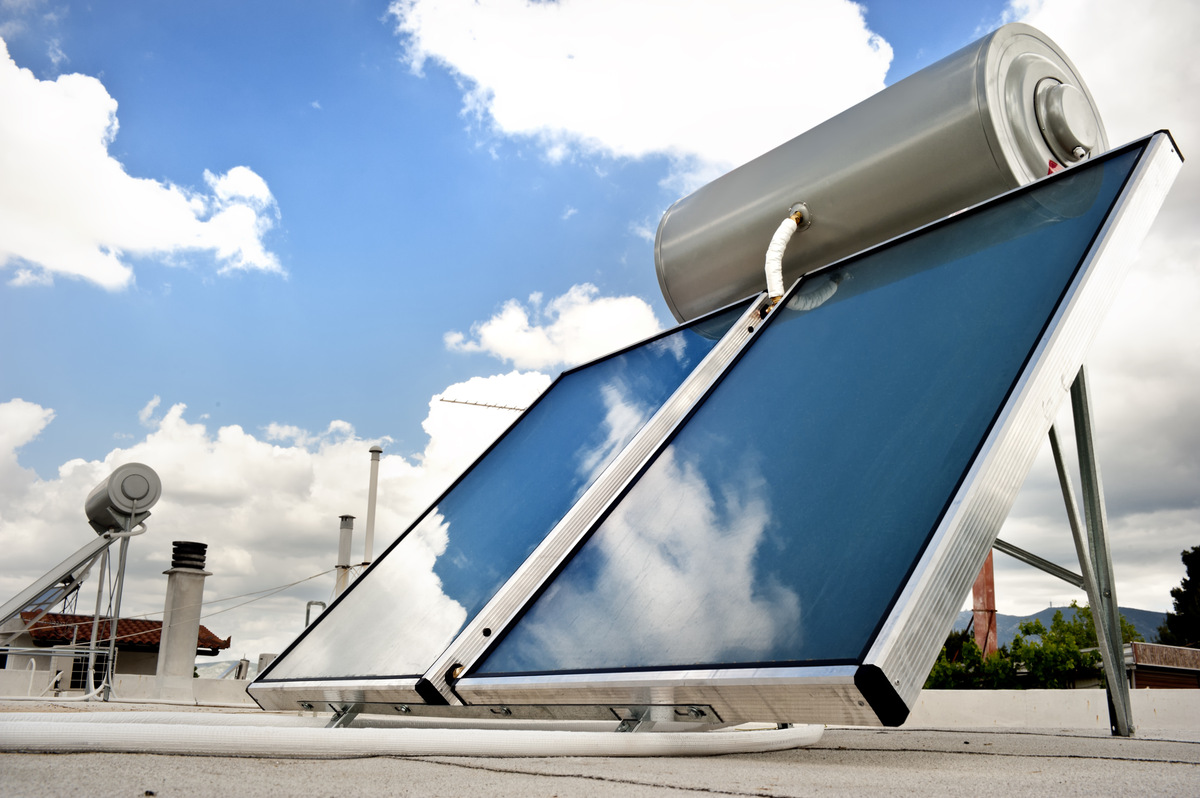
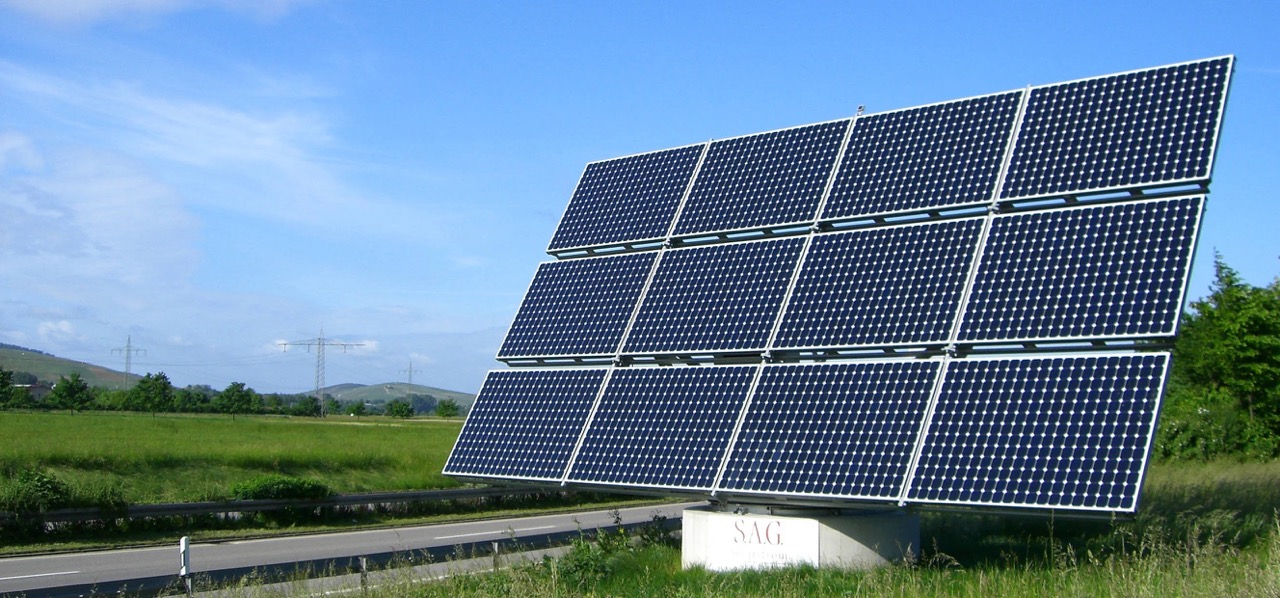

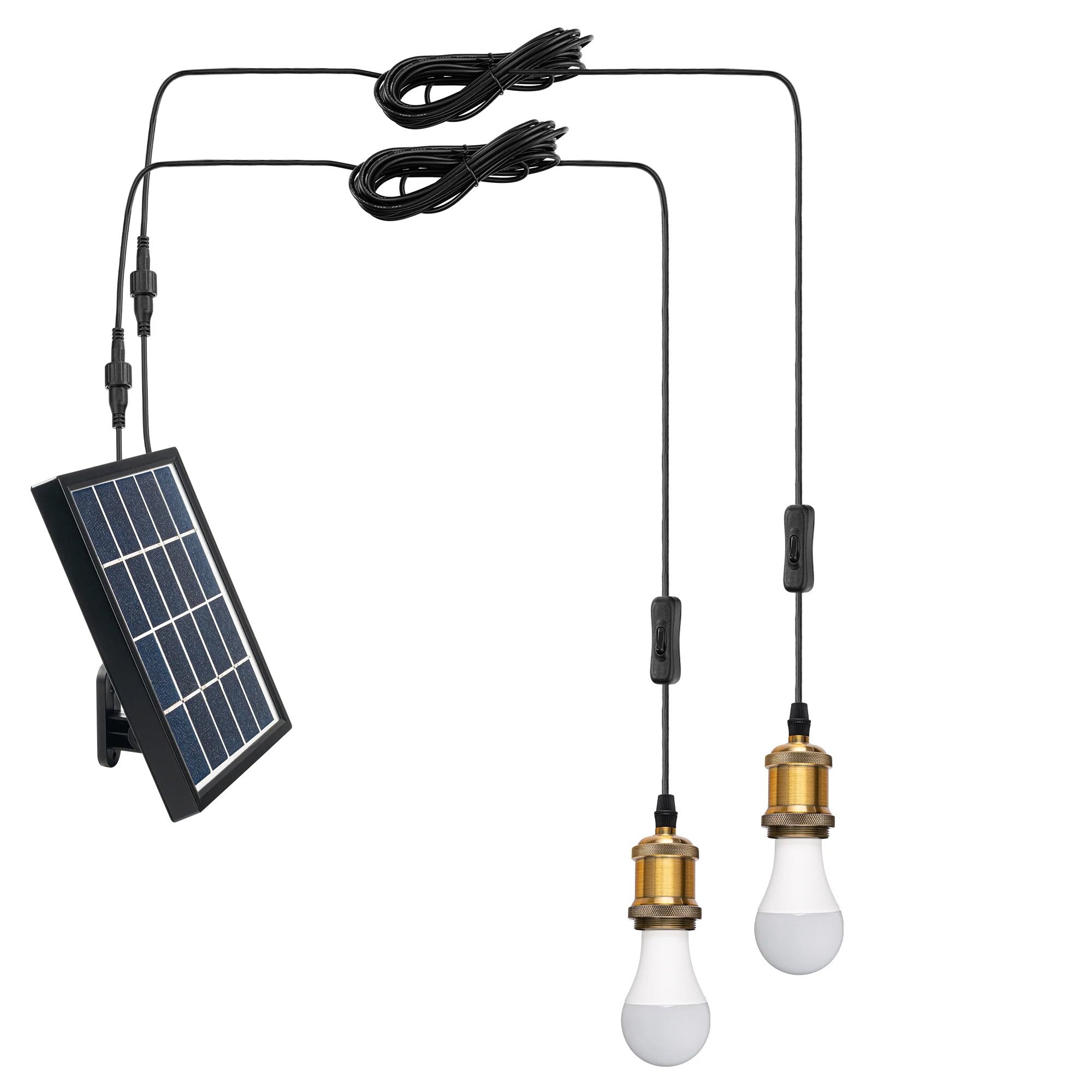
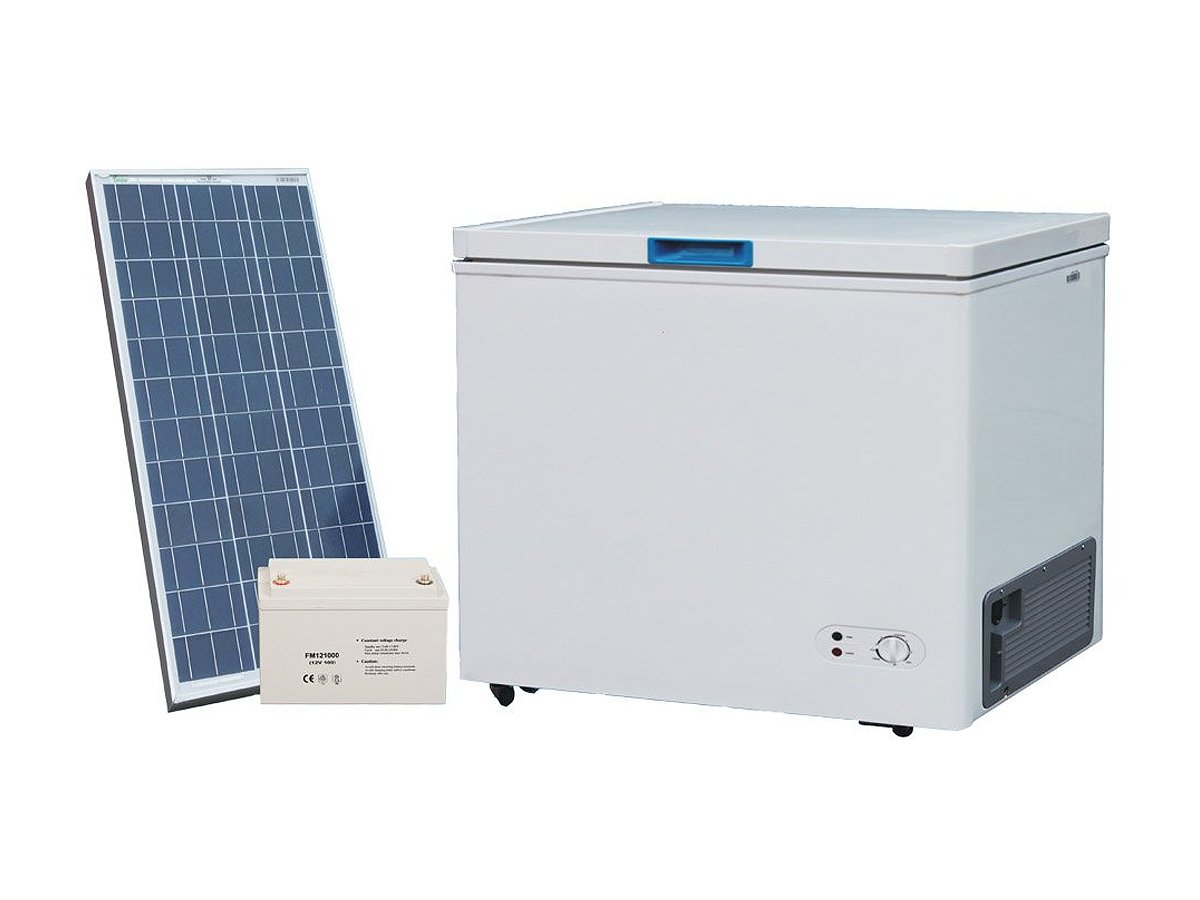
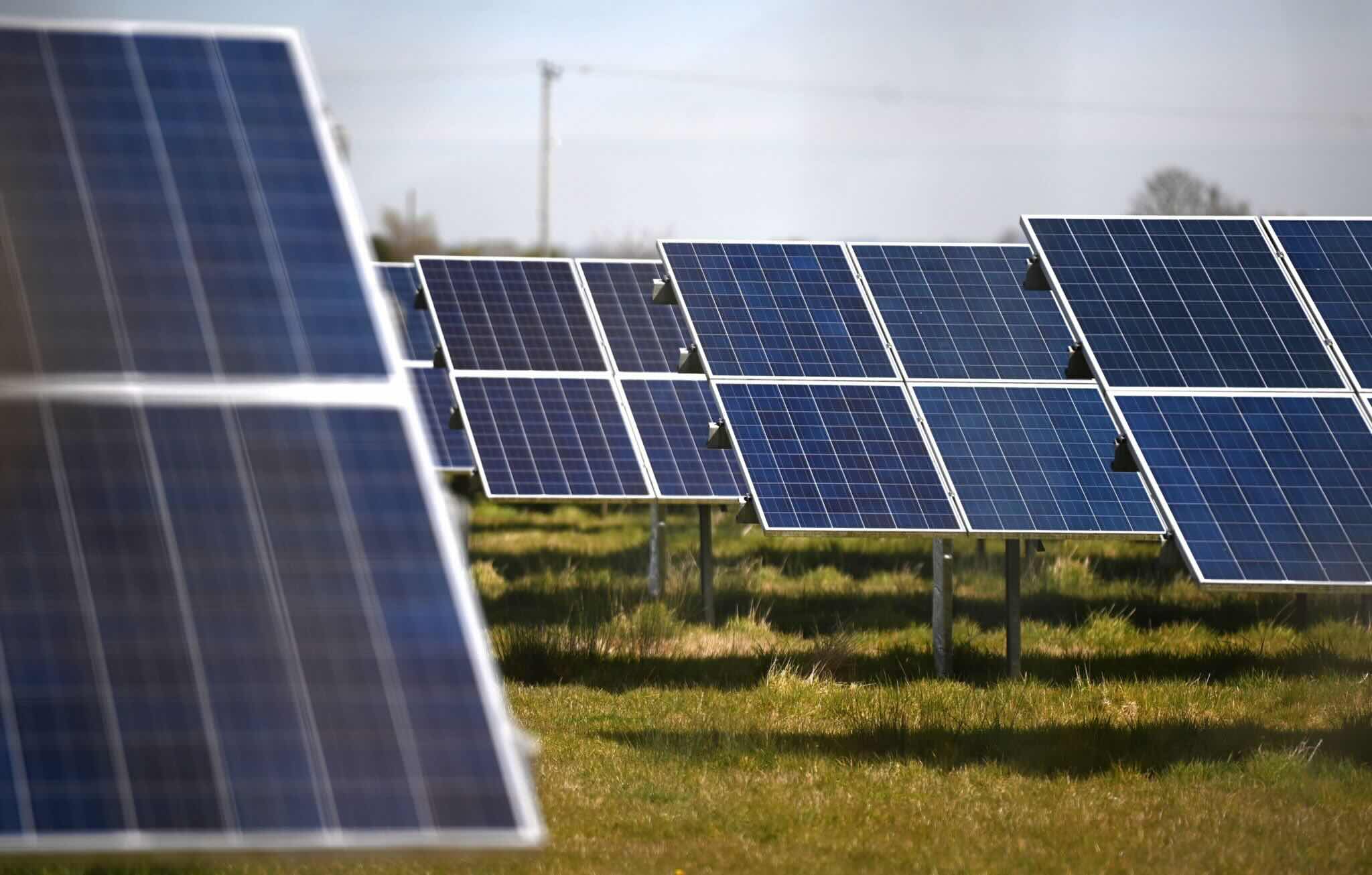

0 thoughts on “How To Store Solar Energy For Later Use”